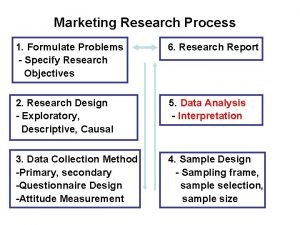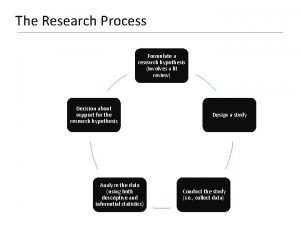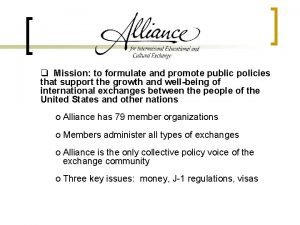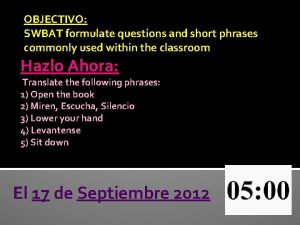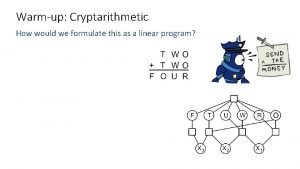5 Overview of the process to formulate and




















- Slides: 20

5. Overview of the process to formulate and implement NAPs: process, 2 objectives, guidelines, the NAP-SDG i. Frame, upcoming SBI assessment of progress Regional training workshop on NAPs for Latin America and the Caribbean 4 to 7 Sept 2017 San Jose, Costa Rica Least Developed Countries Expert Group (LEG)

Adaptation milestones under the Convention

COP decisions on NAPs

Learning loops for adaptation (source: LEG BP&LL Vol 3) Source: http: //unfccc. int/files/adaptation/application/pdf/50301_leg_unfccc_bpll_vol 3. pdf

Objectives of NAPs and the PA global goal on adaptation 1) Objectives of the NAP process (decision 5/CP. 17) are: a) To reduce vulnerability to the impacts of climate change, by building adaptive capacity and resilience; b) To facilitate the integration of climate change adaptation, in a coherent manner, into relevant new and existing policies, programmes and activities, in particular development planning processes and strategies, within all relevant sectors and at different levels, as appropriate. 2) Global goal on adaptation (Article 7 of the Paris Agreement) • Enhancing adaptive capacity, strengthening resilience and reducing vulnerability to climate change, with a view to contributing to sustainable development and ensuring an adequate adaptation response in the context of the global temperature limit of less than 2°C.

Guiding principles for NAPs (decision 5/CP. 17) q Continuous planning process at the q Supported by comprehensive national level with iterative updates monitoring and review and outputs q Considering vulnerable groups, q Country-owned, country-driven communities and ecosystems q Not prescriptive, but flexible and based on country needs q Guided by best available science q Building on and not duplicating existing adaptation efforts q Taking into consideration traditional and indigenous knowledge q Participatory and transparent q Gender-sensitive q Enhancing coherence of adaptation and development planning

Guidelines • Initial guidelines are contained in decision 5/CP. 17, annex • Technical guidelines for the NAP process, developed by the LEG in response to decision 5/CP. 17 paragraph 15 are available in multiple languages at <http: //unfccc. int/7279> • Supplements to the guidelines are available on NAP Central <http: //www 4. unfccc. int/nap/Guidelines/ Pages/Supplements. aspx> The guidelines provide the basis for the formulation and implementation of NAPs

Elements of the process to formulate and implement NAP (decision 5/CP. 17) Element A: Laying the groundwork and addressing gaps • Initiating and launching of the NAP process • Stocktaking: identifying available information on climate change impacts, vulnerability and adaptation and assessing gaps and needs of the enabling environment for the NAP process • Addressing capacity gaps and weaknesses in undertaking the NAP process • Comprehensively and iteratively assessing development needs and climate vulnerabilities Element B: Preparatory Elements • Analysing current climate and future climate change scenarios • Assessing climate vulnerabilities and identifying adaptation options at the sector, subnational, national and other appropriate levels • Reviewing and appraising adaptation options • Compiling and communicating national adaptation plans • Integrating climate change adaptation into national and subnational development and sectoral planning Element C: Implementation Strategy • • Prioritizing climate change adaptation in national planning Developing a (long-term) national adaptation implementation strategy Enhancing capacity for planning and implementing adaptation Promoting coordination and synergy at the regional level and with other multilateral environmental agreements Element D: Reporting, Monitoring and Review • • Monitoring the NAP process Reviewing the NAP process to assess progress, effectiveness and gaps Iteratively updating the national adaptation plans Outreach on the NAP process and reporting on progress and effectiveness

Sample process to formulate and implement a National Adaptation Plan

The NAP is the main output of the process, and is designed to be iterative, country-driven, and would provide the substance of the adaptation ambition expressed in the NDCs and Adaptation Communications under the Paris Agreement Financial support for the formulation of NAPs and implementation of policies, programmes and projects identified therein is well grounded in the GCF

How to find coherence between the SDGs and the NAPs – an integrative framework by the LEG

NAP Technical Guidelines The NAP Guidelines promote a development-first approach, crystalized by looking at SDGs, supplemented by other national level goals/targets, and those from other frameworks e. g. Sendai

SDGs as a linked system of goals and targets Source: David Le Blanc, "Towards integration at last? The SDGs as a Network of Targets“, Rio+20 Working Paper 4


NAP-SDG i. Frame Applying the NAP-SDG i. Frame q It enables countries to harmonize addressing SDGs, national goals and targets (development, disasters, etc) with activities designed to address adaptation in a country-driven manner q It facilitates harmonized reporting on indicators for the SDGs and assessment of outcomes of the adaptation benefits q To do this well, it requires good collaboration between all relevant ministries and supporting agencies and organization – avoiding a silo approach, maximizing synergy and effectiveness q The LEG is providing guidance and advice through regional NAP workshops, and other events

SBI Assessment of Progress Important dates q Submissions from Parties and organizations by 2 October 2017 q Online questionnaire on NAP Central q Additional information collected during the workshops q LEG paper on methodology for assessment q Data portal to support the assessment on NAP Central (by October 2017) q Expert Meeting in February 2018

Exercise 1 Expectations, meaning of the NAP, the NAP process, other adaptation planning processes Regional workshop on NAPs for Latin America and the Caribbean 4 to 7 September 2017 San Jose, Costa Rica Least Developed Countries Expert Group (LEG)

Interactive (expectations and understanding of key concepts) Use cards on each table to answer the following (one card for each): q What does the NAP mean to you? q What does the process to formulate and implement NAP mean to you? q What are other important adaptation planning processes in your country? q What are your expectations for this workshop?

6. Open NAPs Regional training workshop on NAPs for Latin America and the Caribbean 4 to 7 Sept 2017 San Jose, Costa Rica Least Developed Countries Expert Group (LEG)

Contact: The Chair Least Developed Countries Expert Group (LEG) leghelp@unfccc. int
 How to formulate a research question
How to formulate a research question What is claim of policy examples
What is claim of policy examples Formulation of shampoo
Formulation of shampoo Formulate the problem
Formulate the problem 12 powerful words quiz
12 powerful words quiz Overview of accounting process
Overview of accounting process Ppbe cycle
Ppbe cycle Hình ảnh bộ gõ cơ thể búng tay
Hình ảnh bộ gõ cơ thể búng tay Lp html
Lp html Bổ thể
Bổ thể Tỉ lệ cơ thể trẻ em
Tỉ lệ cơ thể trẻ em Gấu đi như thế nào
Gấu đi như thế nào Tư thế worm breton là gì
Tư thế worm breton là gì Bài hát chúa yêu trần thế alleluia
Bài hát chúa yêu trần thế alleluia Các môn thể thao bắt đầu bằng tiếng nhảy
Các môn thể thao bắt đầu bằng tiếng nhảy Thế nào là hệ số cao nhất
Thế nào là hệ số cao nhất Các châu lục và đại dương trên thế giới
Các châu lục và đại dương trên thế giới Công thức tiính động năng
Công thức tiính động năng Trời xanh đây là của chúng ta thể thơ
Trời xanh đây là của chúng ta thể thơ Mật thư anh em như thể tay chân
Mật thư anh em như thể tay chân 101012 bằng
101012 bằng























